What offices used to look like
Whenever we talk about the past, we tend to think of a time where more workers were blue-collar. They worked in factories – they produced textiles, cars, and virtually all of the items that we now largely import from Mexico and China. They worked longer hours each day and more days per week than we do now – it was not uncommon during the Industrial Revolution for people to work 7 days each week.
Here’s what the Industrial Revolution blog has to say about it:
Factories were not the best places to work. The only light present was the sunlight that came through the windows. Machines spit out smoke and in some factories, workers came out covered in black soot by the end of the day. There were a plethora of machines with not many safety precautions. This resulted in many accidents. The workers only received a break for lunch and a break for dinner.
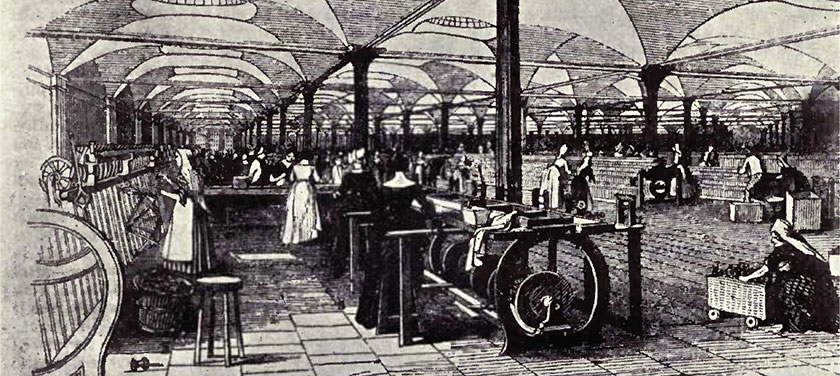
In 1929, that started to change, with the 5-day work week resulting from union political power. Even non-unionized industries soon followed.
This isn’t so far in the past, but here’s a great little visualization from over at NPR showing the most common jobs by state in 1978 (click here to see an interactive version with much more information):
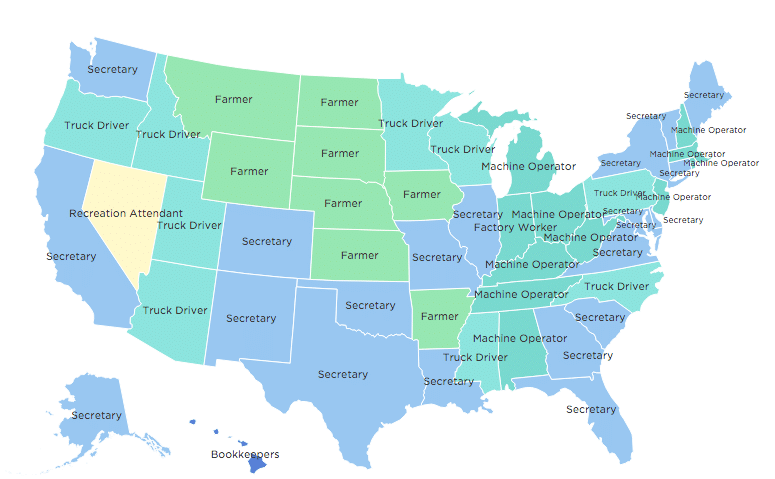
What offices look like today
Those blue-collar jobs we mentioned earlier? That was the high point, and those sorts of jobs continue to disappear. Here’s the same visualization showing the current most popular jobs by state (you’ll notice that there are no more machine operators listed, and far more truck drivers, as the need has grown for intrastate transport of products:
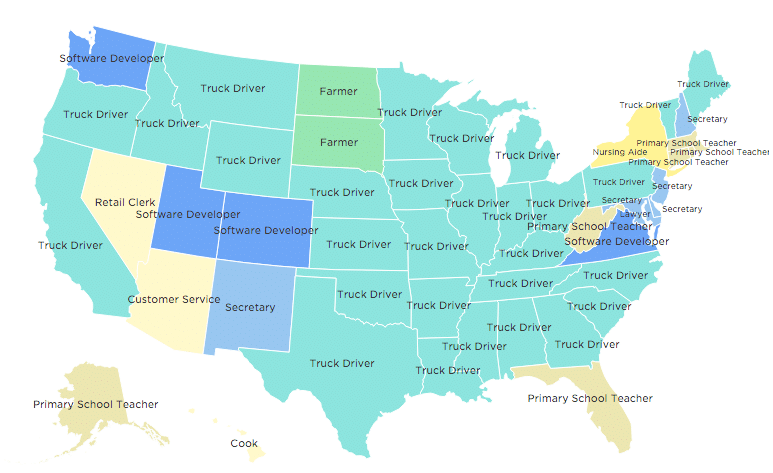
Today, outside of the few very most popular jobs, we live in a knowledge-based economy, where there’s strong competition between high-end employers for talent. That’s led us, slowly, toward more positive work environments that foster creativity, productivity, and – to at least some degree – both physical and mental comfort.
Where we’re headed
The tech giants – Google, Facebook, Twitter, LinkedIn, and others – have generally put forward intentional spaces which promote collaboration. They even have themed rooms (see some of Google’s here and some of Facebook’s here), and an incredible number of office spaces are now wired for video and audio links across the globe. That’s a trend just beginning to blossom, and smaller companies (and universities) have started to emulate this sort of approach.
From a blog post about LinkedIn’s offices:
Each floor has its own kitchen area where healthy snacks, drinks and the mandatory coffee machine are based. We have a whole floor dedicated to food – where we gather for breakfast and lunch. All food is freshly delivered by local restaurants and all paid for by Linkedin. Eating together means we share stories and knowledge between different departments. We also make new connections and build stronger relationships.We also have own onsite gym and encourage mindfulness.
Six Predictions
1. Tech amenities at offices will expand
These aren’t your parents’ amenities – we’re not talking about kitchens. Offices for larger, tech-oriented companies already have Virtual Reality stations, for both pleasure and productivity. Those could double as a capable training tool.
2. Robotics will join computers as productivity boosters
We already rely on machines for data storage, for communication, and for computation and analysis. How long until smart devices can perform automated physical tasks as well. Self-cleaning floors, self-parking chairs – virtually any repetitive task can be automated.
3. Connectivity will continue to increase
The more technology helps us, the more we relay upon it. Even people who work at home now commonly have setups which allow them to work hands-free, allow for VOIP phone connections, Skype and Google Hangouts sessions, and the like. Larger companies will increasingly rely on ERP systems which have the capability to track employees much more thoroughly, ensuring that they’re productive and, to the degree that it can be monitored, that they’re happy. Wearables issues by companies is a trend that feels almost inevitable but which hasn’t yet begun in earnest.
4. Work will become family friendly
Childcare is difficult when you’re at the office. Several CEOs have (famously) installed “home” type components in their offices, to the point of having their children essentially living in the office. That’s a trend that will likely expand – to the point where offices can be not only child-friendly, but designed specifically for children. Elon Musk has even started a school, a venture which can hardly help but have some connection to his company.
5. Holiday-style pampering for employees will become the norm
Some offices have already started to become pet-friendly (though, for now, this is confined mostly to companies that work with pet products). There may not be massages – but every other element of a spa is already in use in at least a few large companies, partially with the goal of employee retention.
6. E-learning will take over training suites
Employees will have immediate, always-on access to training materials. Whether it’s via podcasts, the virtual reality implementations we mentioned earlier, or simple web-based portals and wikis, learning materials will continue to become more accessible. And companies will continue increasing their reliance on completion of those training materials as components in job evaluation and upward mobility. If you want to rise in a company – train for every position above yours. You’ll be able to, during every lunch break and after hours – and during work hours.
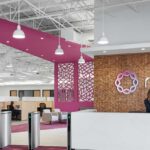
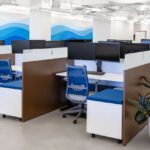

Leave a Reply